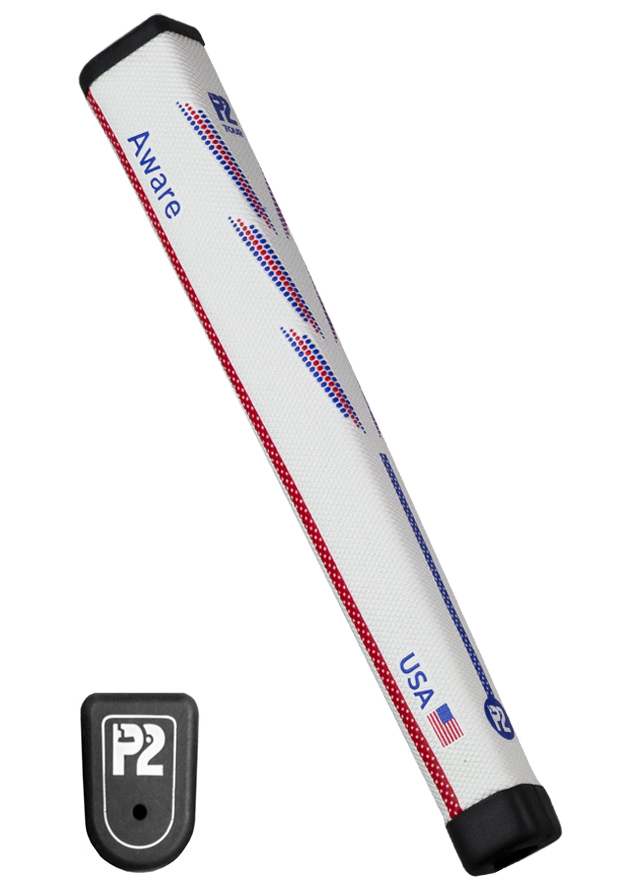What to look for when selecting your putter grip
When purchasing a putter, the first mistake people make is not getting fit for it. The second mistake is assuming that the putter grip that comes with the putter will do just fine. I am going to cover several things you should consider when purchasing a putter grip. Let me state that this piece is based on my personal experience testing different putter grips over the years.
Keep in mind that I will reference the traditional grip and left hand low throughout this post. However, this applies to all grip styles. At this point, most of you know that I strongly believe in controlling the putter with one central pivot point. That said, many people assume that I believe “hands have very little to do with the stroke”. That couldn’t be further from the truth which is why selecting a putter grip is very important to me.
Now, I do tell students to picture their hands frozen onto the grip. For good reason too! 27 bones make up the basic skeleton of your wrist and hand. The hand has 30 muscles with 17,000 touch receptors and free nerve endings in the palm. These pick up pressure sensations, movement and vibration.
In a previous blog post I went over how to properly grip a putter. You can read it HERE. On this post, I am covering why I like particular grip designs over others. I will briefly discuss hand placement and not repeat everything from a previous post.


I’m a fan of flat surfaces, sort of speak. I also look for smaller size grips that enable you to place your hands correctly. In my opinion, oversized, round grips are hurting golfers. The big question is why and what exactly do I mean by all of this.
Remember that statement above about the nerve endings in the palm? That is a big indicator of the “why”. Using pictures from a previous post to demonstrate, I strongly believe in placing the grip along your lifeline. Equally important, place your thumbs one over the other, directly on top of the grip. You should be able to hold a coin between the crease of your thumb and palm/index finger.

Flat Surfaces Vs. Round Grips
- I strongly believe the front surface of the grip should be flat.
- This enables you to build a perfect relationship between the grip and the face of your putter.
- With a flat surface, the position of your thumbs will be perfectly parallel to the target line and perpendicular to the putter face.
- Ideally, the surfaces on the side of the grip will be equally flat.
- This ensures that your palms are facing each other and more importantly, parallel with the putter face and perpendicular to your target line.
- With a round grip, you never know where your palms are truly facing. It causes a lot of confusion.
Standard Size Vs. Jumbo
- A standard size grip enables you to place your hands on the grip correctly.
- A standard grip means less material around the shaft!
- This means more feel! I want you to feel the difference between good and bad impact.
- Jumbo grips dampen the vibration which in turn provides less feedback.
- A jumbo grip does not enable you to place your hands correctly on the grip. It will be hard to indicate where your palms are facing.
- If a player is working on placing both thumbs side by side, I am okay with a jumbo grip as long as the sides are flat too.
- This is typically done to level the shoulders. This can be very beneficial to find that pivot point.
Not everyone will agree with my reasoning. To me it’s common sense but we all have opinions. For reasons provided above, I recommend grips that hold a shape similar to the P2 Tour Aware or the Kronos Magister Ludi Grip.
That said, I am a fan of a lot of grips on the market. To this day, I still use the original Ping grip (PP58). Yes, the one Tiger uses. Not everyone will like the pistol shape design, but for me it has more to do with the size of the grip. I wear a M Cadet size glove and that grip fits me well.
I’m also a big fan of the material. It’s a basic rubber construction but the overall size makes all the difference. I know immediately when I have pushed or pulled a putt. That to me is valuable feedback that helps a golfer learn through trial and error. You will find that same type of material with Iomic grips. I’m a big fan of Iomic as well.
Now, I’m not here to talk bad about any products. At this stage, you should be able to gauge a good grip from a bad grip. Don’t pay too much attention to what the tour players are using. I hope you’re smart enough to understand those are financial decisions:)
Take a good look at your putter grip and determine if you should do a good ol switcheroo!

